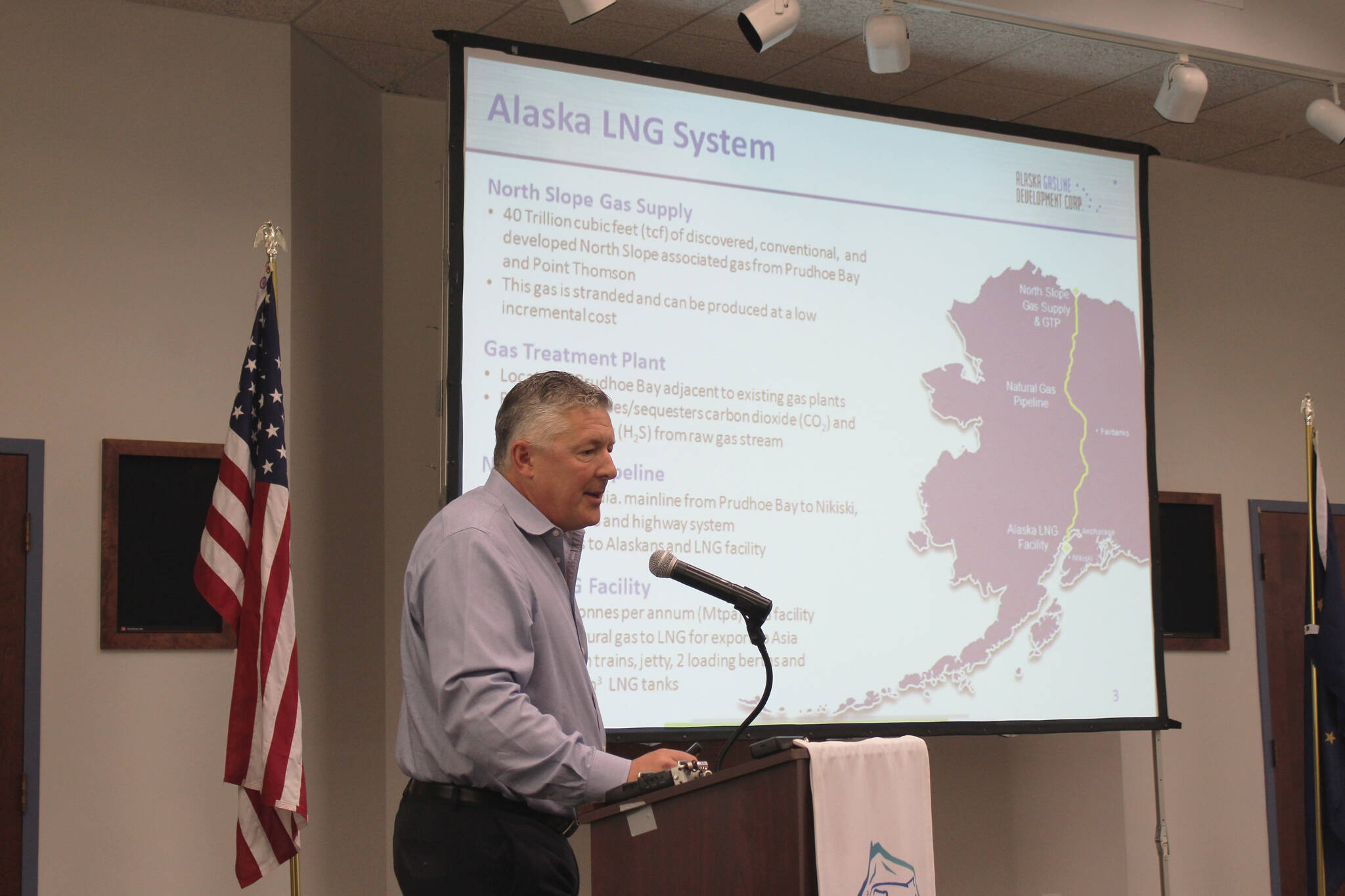Alaska’s two U.S. senators threw their support behind the Alaska LNG Project this week in a joint letter that touted the project’s economic and energy security benefits.
The Alaska LNG Project, years in the works, would move gas from the North Slope through an 800-mile pipeline to a liquefaction plant in Nikiski. The project has seen revived interest since the Russian invasion of Ukraine and in light of new federal funding opportunities.
U.S. Sens. Lisa Murkowski and Dan Sullivan urged in a joint Aug. 29 letter to U.S Department of Energy Secretary Jennifer Granholm that the feds finalize a draft supplemental environmental impact statement for the project. The senators also urged the department to reissue its approval of the project.
“AKLNG would provide a supply of long-term, clean natural gas critical to our energy security and the growing global demand for energy, given Alaska has enough available gas to reduce our reliance on authoritarian foreign adversaries,” the senators wrote of the project.
Funding got a major boost under the federal Infrastructure Investment and Jobs Act. Through that legislation, which Murkowski helped spearhead, the LNG Project now has access to an existing loan guarantee program that will provide a roughly $26 billion funding backstop. The project’s total capital costs are estimated to be around $38.7 billion.
The Kenai Peninsula’s local leaders formally backed the project in early August. The City of Kenai, the Kenai Peninsula Borough and the Kenai Chamber of Commerce and Visitor Center sent similar letters of support for the project, citing potential economic benefits and energy security for Alaskans.
That support came on the heels of a presentation given by Alaska LNG Project Manager Brad Chastain, in which he said there is currently a unique window of opportunity to get the project done.
The federal government over the summer solicited a new round of public comments, this time on a draft supplemental environmental impact statement. That statement supplements the project’s 2020 environmental impact statement and was prepared in response to a challenge by the Sierra Club, which argued that the original statement “did not examine all of the reasonably foreseeable impacts” of the project.
State Sen. Peter Micciche wrote in an Aug. 15 letter of support for the project that the Nikiski liquefaction plant would bring jobs and revenue to the Kenai Peninsula and a demand for cleaner and more affordable energy.
“As the state with the highest cost of energy per unit in the US (as well as air quality issues within the Interior) Alaska and my district economically yearn for the clean, reliable and reasonably priced energy this project will deliver,” Micciche wrote. “Anytime we can reduce the cost of energy here in Alaska, it is a win-win for all our citizens.”
Project proponents have touted what they say is the relative environmental benefits of the project over other energy sources, like coal plants, which the LNG project would displace.
The project has three key factors: a gas treatment on the North Slope, an 800-mile pipeline, and a liquefaction facility in Nikiski. The treatment plant will condition gas taken from the Prudhoe Bay and Point Thomson fields. Once the gas is conditioned, it will be moved through the pipeline to the Nikiski facility, where it will be liquefied.
The planned Alaska LNG pipeline route generally follows that of the trans-Alaska pipeline until about Livengood, which is north of Fairbanks. From there, the proposed LNG pipeline veers west through the Denali Borough, into the Matanuska-Susitna Borough, under Cook Inlet and into Nikiski.
The plan is for the liquefaction plant in Nikiski — to be located south of the Nutrien plant near Miller Loop Road — to export 20 million tonnes per year. The project has gradually accumulated land parcels throughout Nikiski. From Nikiski, the gas would be changed from a gaseous to liquid state and then exported to primarily Asian markets.
More information about the Alaska LNG Project can be found at alaska-lng.com.
Reach reporter Ashlyn O’Hara at ashlyn.ohara@peninsulaclarion.com.

